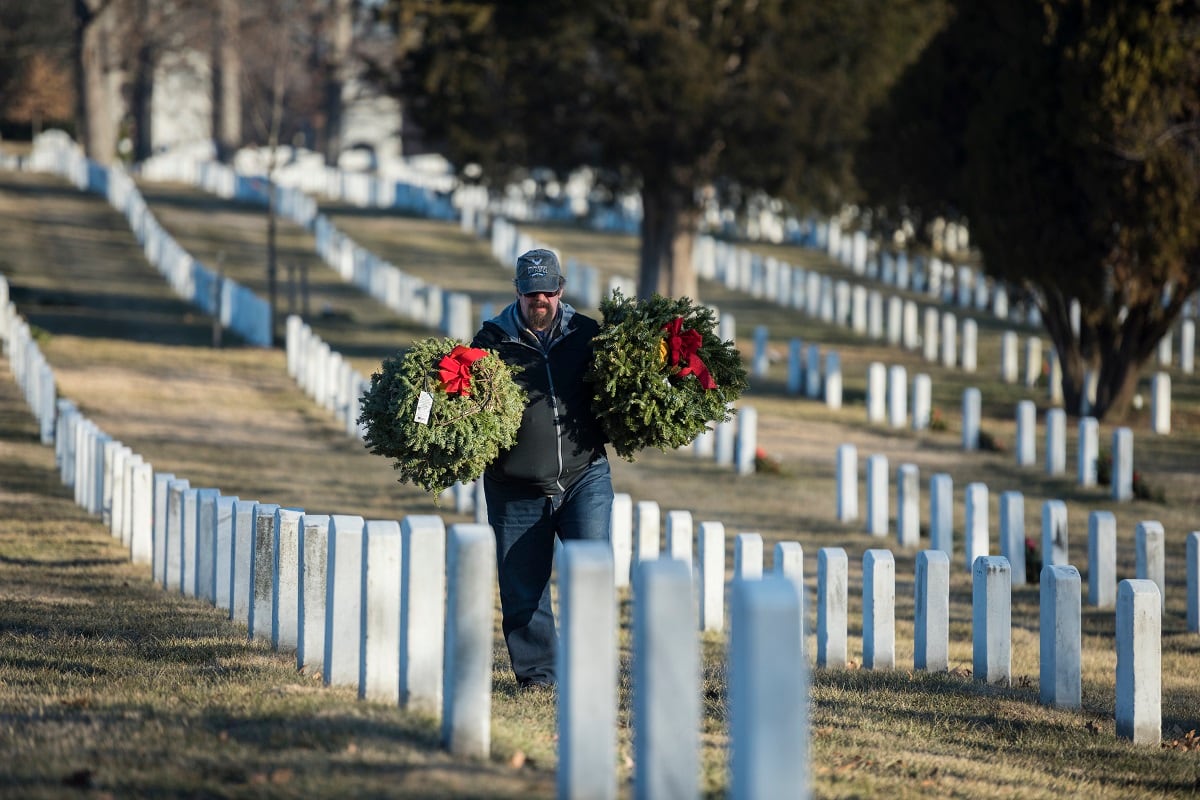WASHINGTON — Veterans groups on Thursday opposed the idea of severely restricting eligibility for burial at Arlington National Cemetery in coming years to ensure the viability of the iconic landmark for decades to come.
But military officials said they don’t see another realistic choice.
“We are filling up every single day,” said Karen Durham-Aguilera, executive director of Army National Military Cemeteries. “Within the next few years, Section 60 — known for the recent wars — will be closed. This is on our mind every day.”
The 154-year-old cemetery, originally established as an overflow site for mounting Civil War casualties, has become one of the most hallowed military sites in America. More than 3 million visitors travel to the site annually, and more than 7,000 service members were interred at the cemetery in fiscal 2017 alone.
But Army officials said only about 100,000 burial sites are left at the site, tucked between the Potomac River and the ever growing northern Virginia suburbs. Expansion plans are expected to keep burials on pace into the 2040s, but not much beyond that.
RELATED

That has prompted discussions of eligibility for burial at the site. Currently, most honorably discharged veterans can request Arlington Cemetery as their final resting place. Proposals under consideration by the service could restrict that to only troops killed in the line of duty and certain distinguished veterans, like Medal of Honor or Purple Heart recipients.
Veterans groups told lawmakers during a House Armed Services Committee hearing on the topic Thursday that they’re not in favor of such moves.
“We should save a select number of spaces for those individuals, but not change the eligibility rules at the exclusion of those serving today,” said retired Col. Keith Zuegel, senior director at the Air Force Association.
Officials from the Veterans of Foreign Wars, Military Officers Association of America and American Legion expressed similar concerns with excluding thousands of veterans who may have been planning to use the national cemetery for their burials.

But an Army survey conducted last year found wider support for more exclusive rules, with more than 60 percent in favor of restrictions that military planners say will keep the site viable well past 2100. A second survey on the issue will be conducted this spring.
Durham-Aguilera said the current space crunch means that “a veteran from the 1991 Gulf War who lives to his or her normal life expectancy will not be able to be interred at Arlington.” Plans to add more above-ground burial sites and to carve out more space within the existing cemetery boundaries will add some short-term relief, but not significantly help the problem.
Several veterans groups suggested the possibility of adding a new national burial site with the same “Arlington” name elsewhere in the National Capital region, saying it could avoid the eligibility fight and create a second national touchstone for deceased veterans.
But lawmakers on the committee expressed skepticism that a new site would carry the same national importance, and expressed their preference that service members killed in the line of duty be ensured a place of honor at the current site well into the future.
“We should put a higher priority for those individuals at Arlington,” said Rep. Don Bacon, R-Neb. and a retired Air Force brigadier general. “It seems like that place should be reserved for those who have made the ultimate sacrifice for the country.”
An advisory committee for the cemetery is expected to make its recommendations to Congress on the eligibility issue later this year.
Leo covers Congress, Veterans Affairs and the White House for Military Times. He has covered Washington, D.C. since 2004, focusing on military personnel and veterans policies. His work has earned numerous honors, including a 2009 Polk award, a 2010 National Headliner Award, the IAVA Leadership in Journalism award and the VFW News Media award.




